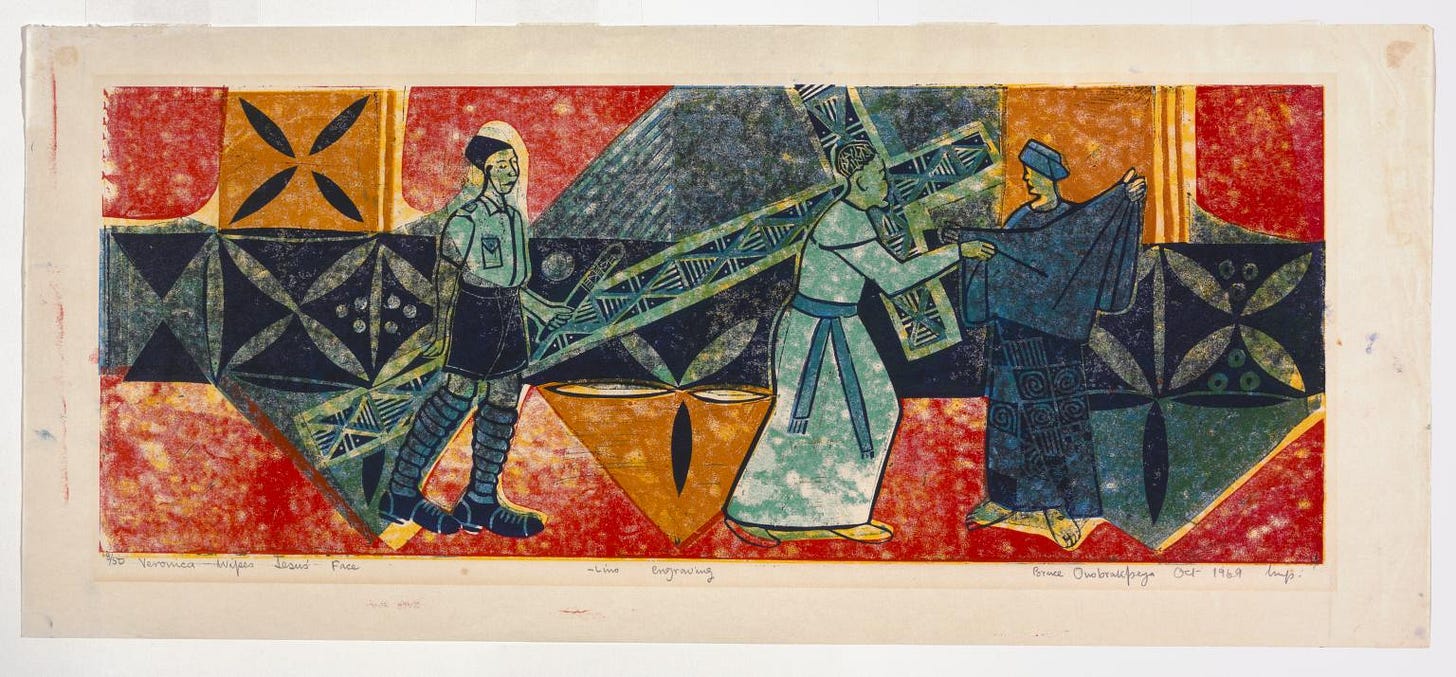This week is your last chance to shape Baobab.
Image of the Day
Spotlight Stories
Bruce Onobrakpeya: The Nigerian Artist Who Put Jesus in Adire
Meet Bruce Onobrakpeya, the 91-year-old Nigerian artist who's been shaking up the art world for longer than most of us have been alive.
Onobrakpeya's claim to fame?
Oh, just casually reimagining the Stations of the Cross with a distinctly Nigerian flair.
We're talking Jesus in adire (that's fancy Nigerian tie-dye for you fashion-challenged folks), Roman guards as British colonial officers, and Jerusalem looking suspiciously like post-colonial Nigeria.
It's like he took the Bible and ran it through an Afrocentric Instagram filter.
But this artistic rebel didn't just stop at giving Jesus a wardrobe makeover. He's been blending Western and Nigerian art techniques like a cultural mixologist for over 70 years.
The result?
A cocktail of creativity that's got the art world buzzing louder than a Lagos traffic jam.
Now, at 91, Onobrakpeya’s work is being displayed at the Smithsonian museum in the States, and we think you should take a look, or visit, if you can.
Kenya's Debt Dilemma: Navigating the Economic Tightrope

Kenya's President William Ruto is walking a financial tightrope, and the safety net below is looking increasingly frayed. The East African economic hub is grappling with a ballooning debt that's expected to grow even more after deadly protests forced the rejection of a finance bill Ruto said was needed to raise revenue.
Now, he's warning of "huge consequences" ahead.
Ruto's Unpopular Quest
Since taking office two years ago, Ruto has become deeply unpopular over his quest to introduce taxes meant to enable Kenya to repay its staggering $80 billion public debt to lenders including the World Bank, the IMF, and China. The public debt makes up about 70% of Kenya's GDP, the highest in 20 years.
But Kenyans, already struggling with rising prices on basic goods, have rejected attempts to raise taxes. They even stormed parliament during recent protests, with some carrying posters reading "IMF stop colonialism."
Facing public calls to resign, Ruto has promised to slash the $2.7 billion budget deficit by half and borrow the rest, without specifying from where. He's also pledging funding cuts in his own office and closing almost four dozen state enterprises with overlapping roles.
The key question is how Ruto's administration will find the money to pay off debt without further angering millions of Kenyans barely getting by, and without slowing down the economy, which grew 5.6% in 2023.
Meanwhile, A Lesson On How Gen Z Made Protests Tech-Savvy
That rejected Finance Bill seems to have awakened the sleeping giant of youth activism, and boy, did these kids know how to throw a digital tantrum!
Gone are the days of mere picket signs and megaphones. These tech-savvy youngsters turned their smartphones into weapons of mass demonstration.
Hashtags flooded social media faster than you can say "tax hike," transforming platforms like X (formerly Twitter) and TikTok from dance challenge hubs to hotbeds of political dissent.
These protesters didn't just stick to your run-of-the-mill social media. Oh no, they went full James Bond with their tech.
Enter the Zello app (turning every protester’s phone into walkie-talkies) and USSD codes to coordinate logistics through brick phones – useful when a state shuts down your internet.
Dr. Bright Gameli, a cyber-security expert, couldn't contain his excitement: "The whole walkie-talkie thing was just brilliant!" We get it, Doc. It's not every day you see a protest organized with the efficiency of a corporate team-building exercise.
So, looks like the future of protests is here, and it's powered by apps. Vive la résistance... digitally!
Food for Thought
“Where you will sit when you are old shows where you stood in youth."
— Yoruba Proverb







